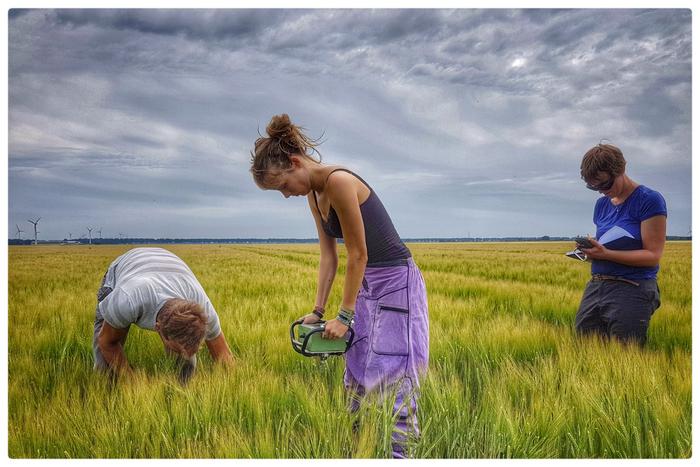In an era where global food security and environmental sustainability have become pressing challenges, groundbreaking research from the Netherlands Institute of Ecology (NIOO-KNAW) reveals compelling insights into soil management practices that could revolutionize agricultural productivity and sustainability. Published today in the prestigious journal Science, this extensive study demonstrates that reducing the intensity of soil management, regardless of whether farming systems are conventional or organic, significantly enhances soil functionality—a critical factor for resilient and productive agroecosystems.
Soil health forms the foundation of sustainable agriculture, influencing a myriad of ecosystem services including nutrient cycling, water retention, carbon sequestration, and disease suppression. The concept of soil multifunctionality encapsulates these interlinked roles, emphasizing the need to sustain diverse soil functions to secure long-term agricultural outputs. This new study rigorously quantifies how differing tillage intensities impact multifunctionality across more than 50 paired Dutch farms, revealing that less intensive soil disturbance consistently promotes a healthier, more functional soil environment.
A remarkable aspect of the research is the nuanced understanding it brings to the organic versus conventional farming debate. Contrary to popular assumptions that organic systems inherently foster superior soil health, the findings suggest that tillage intensity exerts a stronger influence than the farming system itself. By analyzing ‘twin farms’—organic and conventional farms situated adjacently on similar soil types—the team effectively isolated management intensity as the primary driver behind soil function efficacy. This challenges prevailing paradigms and underscores opportunities for sustainability gains in conventional agriculture through de-intensification strategies.
Mechanical disturbance of soil, particularly through frequent ploughing, disrupts soil biotic communities and elemental cycles, thereby diminishing the soil’s biological and chemical integrity. The research meticulously documents the detrimental effects of soil inversion, a common practice in conventional tilage systems, on microbial biomass and organic carbon content—both pivotal indicators of soil vitality. Conversely, reducing the frequency of ploughing mitigates these disruptions, fostering conditions conducive to stable microbial populations and enhanced carbon sequestration, which collectively bolster soil multifunctionality.
Moreover, the integration of grass-clover mixtures as cover crops emerges as an effective adjunct to reduced tillage in promoting soil health. Such leguminous cover crops enrich soil nitrogen content via biological fixation and improve soil structure through extensive root systems. By alternately cultivating cereals like wheat, barley, and rye alongside these mixtures, farmers introduce a diversified crop rotation that supports soil biological diversity and resilience. The findings highlight how these combined practices contribute to sustained or improved crop yields while maintaining or enhancing soil functionality.
Quantitative soil analyses were performed on diverse soil types, including sandy and marine clay soils prevalent in the Netherlands. Across both soil textures, the research reveals consistent trends: organic carbon concentration serves as the most reliable predictor for multifunctionality, while bacterial biomass emerges as the key biological indicator. These metrics affirm that soil organic matter not only underpins nutrient availability but also stabilizes soil structure and fosters a robust microbial community—both essential for multiple ecosystem services.
This study further challenges the widely discussed notion of “sustainable intensification,” a strategy aiming to increase yields on existing farmland through more intensive management. Instead, the researchers advocate for a paradigm they term “productive de-intensification,” emphasizing reduced mechanical disturbance while striving to maintain crop yields. This approach strikes a delicate balance between productivity and environmental stewardship, proposing that less frequent tillage can sustain both soil health and agricultural output.
The research is a hallmark outcome of the Vital Soils project, an initiative funded by the Dutch Research Council (NWO) and coordinated by NIOO, involving scientific partners from Wageningen University & Research and Universität Tübingen, along with key social partners from agricultural sectors. Integrating experimental soil sampling with farmer-contributed management data provided a holistic understanding of soil functions across real-world agricultural landscapes, thereby bridging the gap between science and practice.
An earlier facet of the Vital Soils project utilized satellite imagery to monitor crop greenness—a proxy for yield potential—showing that reductions in management intensity did not compromise production levels. Intriguingly, organic farms were observed to attain yield parity with neighboring conventional farms approximately 17 years post-transition, indicating that the benefits of sustainable practices accrue gradually but substantially over time.
Lead researchers highlight the practical implications of these findings for farmers and policymakers aiming to make agriculture more sustainable without sacrificing productivity. It is not necessary to transition fully to organic farming to achieve positive impacts. Even incremental reductions in tillage frequency and the strategic use of cover crops within conventional systems can markedly enhance soil multifunctionality and preserve crop yields, pointing to scalable solutions adaptable across varied farming contexts.
By elucidating the critical role that management intensity plays in sustaining soil health, this research paves the way for more informed, science-based agricultural practices. It offers a compelling vision for the future: productive, resilient soils maintained through mindful, less invasive farming techniques that underpin food security while mitigating environmental pressures such as climate change and biodiversity loss.
As soil degradation continues to threaten global agriculture, these insights arrive at a pivotal moment. They call upon farmers, agronomists, and policymakers to re-evaluate current tillage regimes and embrace strategies that harmonize soil conservation with sustained agricultural productivity. Ultimately, the study illustrates that fostering soil vitality is not merely an environmental imperative but a practical necessity for the future of farming worldwide.
Subject of Research:
Soil health and multifunctionality in relation to tillage intensity in conventional and organic farming systems.
Article Title:
Conventional and organic farms with more intensive management have lower soil functionality
News Publication Date:
25-Apr-2025
Web References:
https://nioo.knaw.nl/en
DOI link
References:
Science Journal Article (DOI: 10.1126/science.adr0211)
Image Credits:
Ron de Goede / Wageningen University
Keywords:
Agroecosystems, Organic farming, Conventional farming, Sustainability, Sustainable agriculture, Ecology, Plant sciences, Ecosystems, Soil carbon




